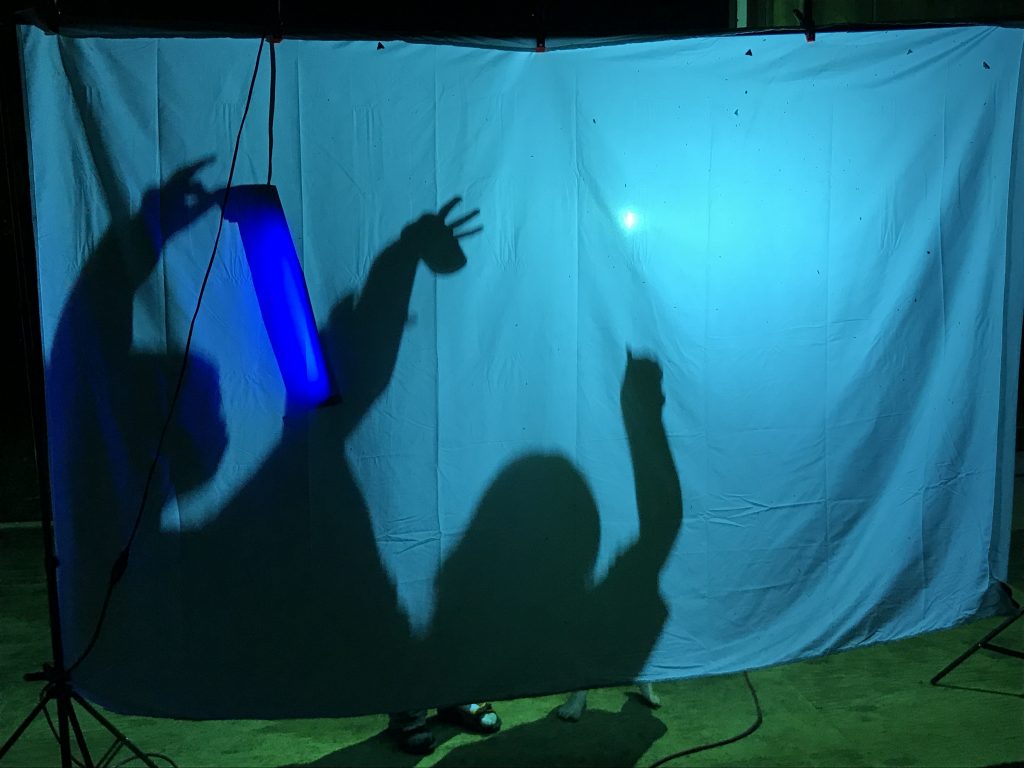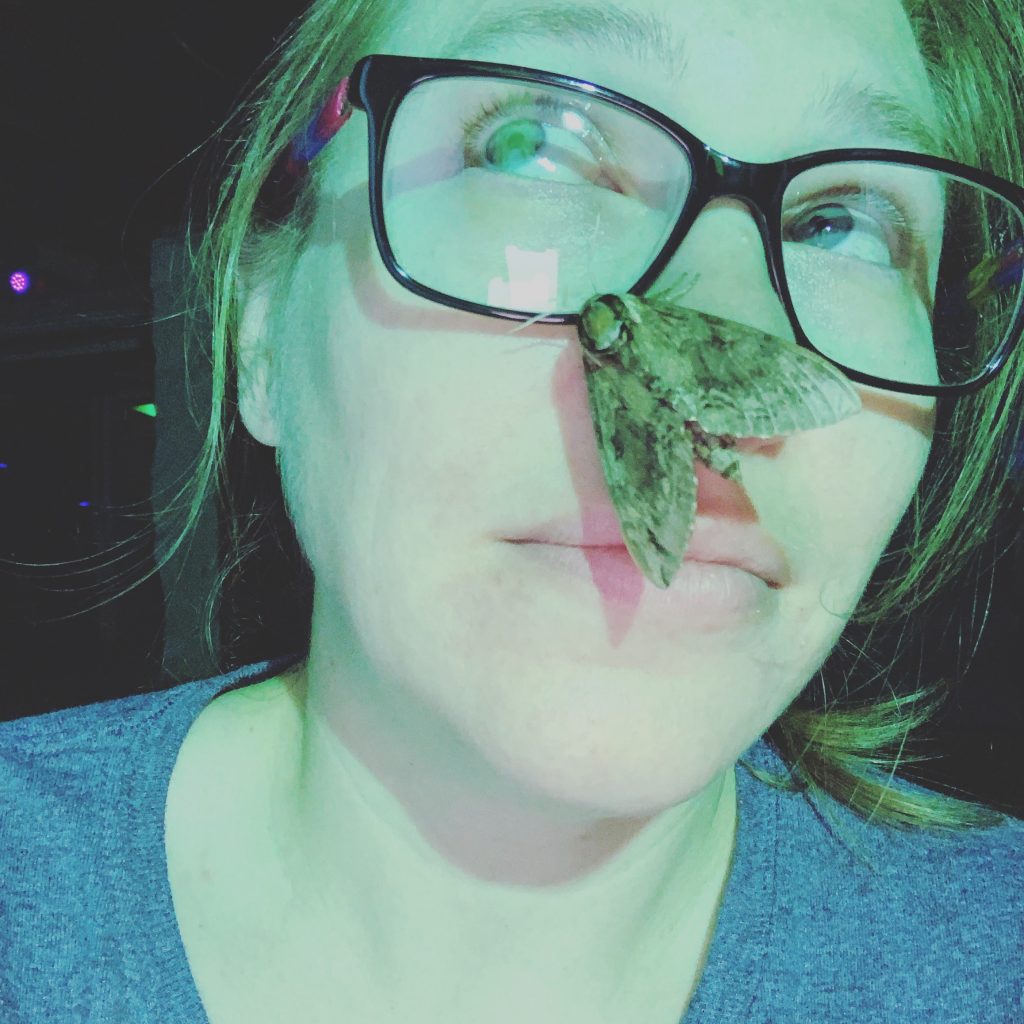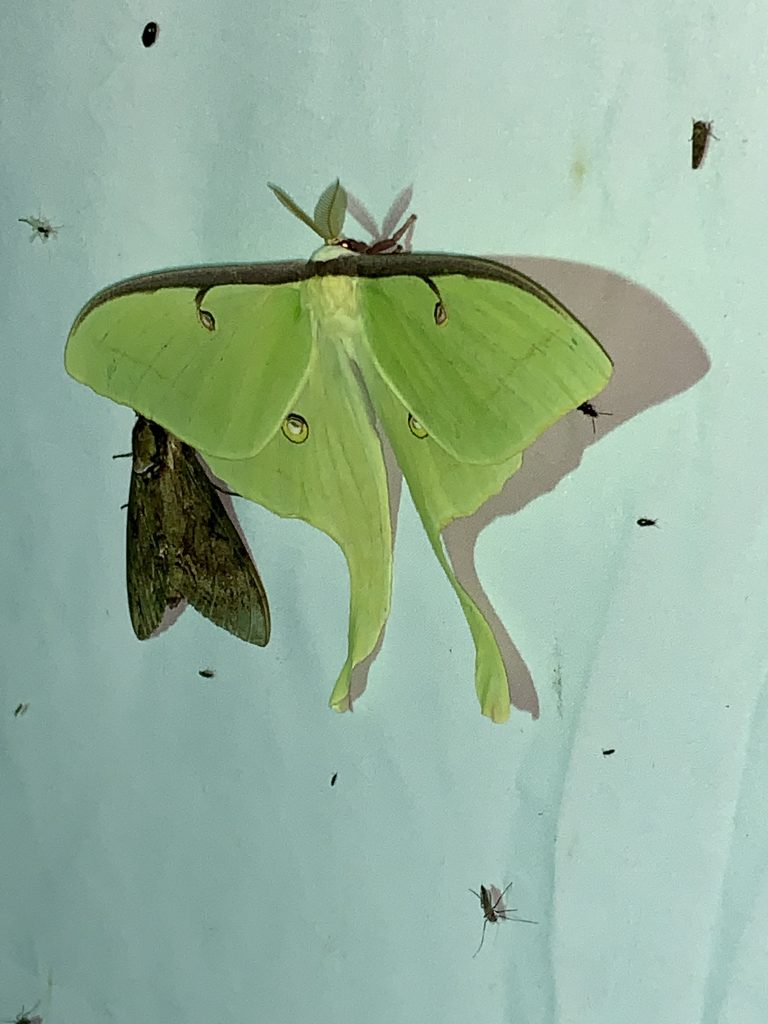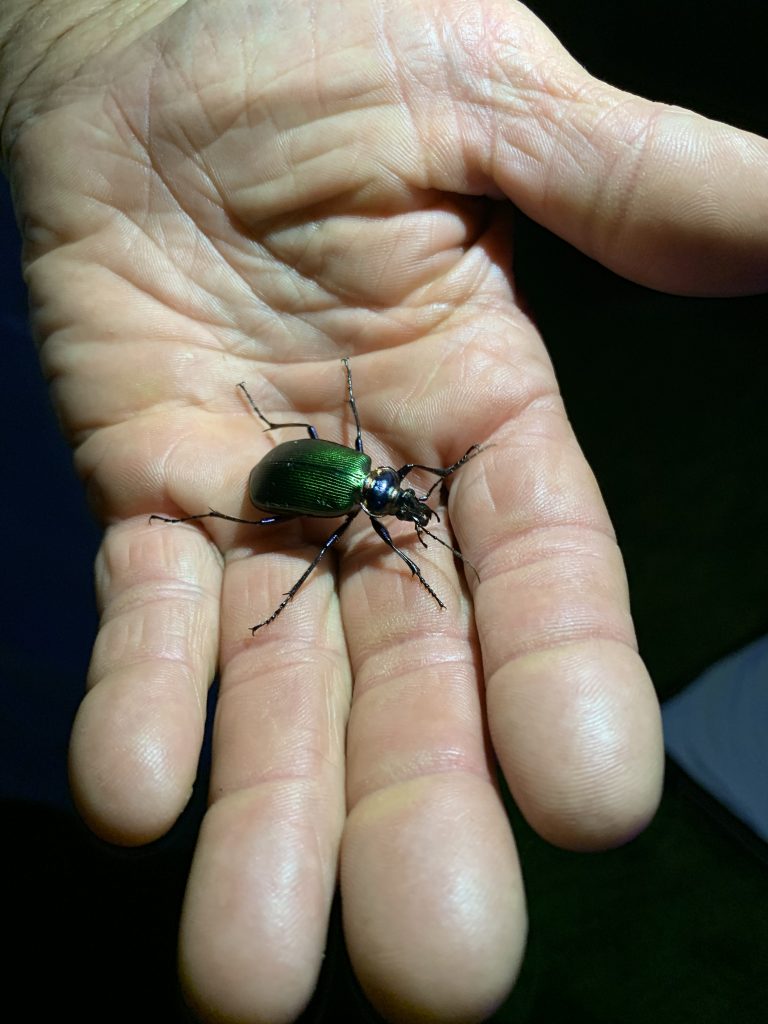Every year since 2016, I have gone to Hildacy Farm Preserve in Media, PA to set up a Moth Night. Natural Lands Hildacy Preserve encompasses 55 acres and is managed by a former graduate classmate of mine, Mike Coll. Mike has spent years working towards eliminating invasive plant species and fostering native ones. When I realized I could do a Moth Night, he was one of the first people I contacted, his preserve would be perfect for a set up, and he knew a lot of people who would love to participate. He agreed and every July since then we have gotten together to celebrate National Moth Week. We made a few Moth Nights public, but the private events where we just invite fellow moth-ers and friends has been the most fun. Everyone brings their kids and we camp out and enjoy each other’s company, geeking out when a particularly cool moth lands on the sheet. Last year, 2019, we had the best Moth Night, with a Luna Moth as our final moth of the evening.

When National Moth Week announced sign-ups for this year, I was once again filled with excitement. Mike and I had plans to set up multiple nights and multiple locations. Normally we set up near the barn (source of electricity), but this year we wanted to try and go out into the meadows. It would require many more extension cords and maybe a car battery, but we wanted to see how the meadow population compared to what shows up near the barn.
Then the SARS-CoV-2 virus hit the United States and with it a poor response to the pandemic. Mike and I both have children and families, the risk of holding an event would be too high for us. We decided to nix it this year, and while it makes my heart heavy, I know it’s the right choice.
But Moth Night must go on! This year I am going to set up my lights in my own backyard and live tweet and Instagram what I see. Most events I have participated in this year have been virtual, so why not make a virtual Moth Night?! And I haven’t taken an inventory of my back yard for a few years. I recently installed a meadow in my own backyard, and I am curious to see if it has made an impact on the biodiversity in my little .33 acres. Anecdotally I can say that this year I am seeing more lightning bugs, but what has the impact been for moths?
I use a pretty simple setup: one old white sheet from my college days, one black light (also from my college days), one photo backdrop support system to hang the sheet, one mercury vapor light, and a rain shield for the light in case of rain. I use my grandfather’s old tripod for stabilizing the mercury vapor light. He was a photographer when he first immigrated to this country and the tripod was one of the items he brought with him from Germany. The photo backdrop needs to be anchored or it will topple over, we usually rig something together using bungee cords and weights. We have also used tent stakes and rope to successfully keep it upright. For identifications, I use the Peterson Field Guide to Moths of Northeastern North America, and the Kaufman Field Guide to Insects of North America for the other insect guests that stop by.
Please join me on July 19th, 2020 via Twitter and Instagram to see what I find in my backyard. Will the Regal Moth return this year? Will I see any Sphingids? How many Noctuids and Geometrids will there be? I can’t wait to find out!

Tanya Dapkey is an entomologist working in the Patrick Center for Environmental Research in the Academy of Natural Sciences of Philadelphia where she studies stream macroinvertebrates to determine water quality. She has an Masters in Environmental Studies from the University of Pennsylvania and worked with Dr. Daniel Janzen for almost 15 years on the Lepidoptera of the ACG project. Learn more about her at https://www.tanyadapkey.com/ and follow her on Twitter and Instagram: @TanyaDapkey

